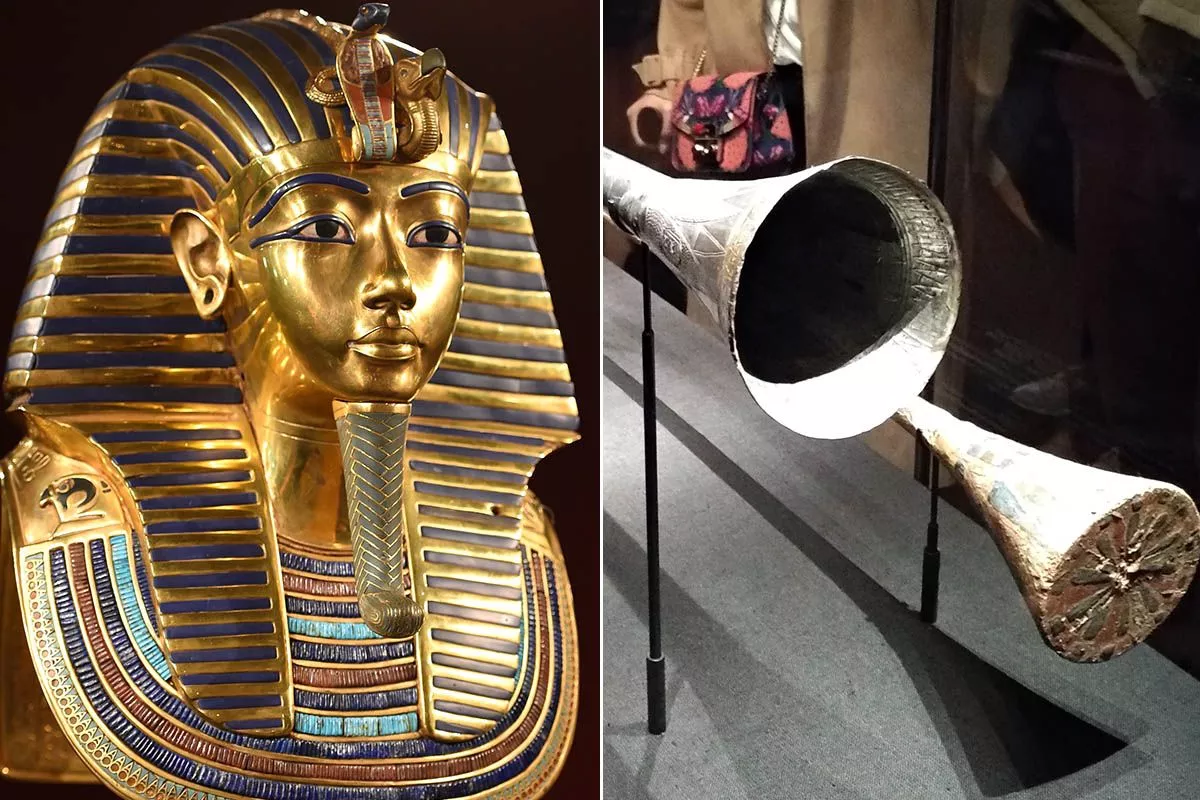A new study suggests that ancient Egyptians may have experimented with nuclear technology, linking the "Pharaoh's curse" to buried radioactive nuclear waste found in tombs.
The burial mask of Egyptian Pharaoh Tutankhamun
(Image:Getty Images)
Recent research delves into the enigmatic "Pharaoh's Curse" that seemed to afflict those who dared to disturb the sanctity of ancient Egyptian tombs. This study, featured in the Journal of Archaeological Science, overturns conventional wisdom by proposing a provocative theory: the curse may have been linked to the inadvertent exposure to radioactive nuclear waste stored within these ancient burial sites.
The investigation draws a striking parallel between ancient Egyptian texts and nuclear technology, suggesting a level of scientific sophistication previously unrecognized. Texts dating back to 2300-2100 BC, such as the Pyramid Texts and Coffin Texts, contain references to transformative processes reminiscent of uranium-based materials. For instance, descriptions of Osiris as being "transformed into light" hint at an understanding of nuclear energy release and matter-energy conversion.
Moreover, symbolic references to substances like "saffron cakes" evoke uranium-related materials, implying an early awareness or utilization of radioactive elements. Intriguingly, archaeological evidence indicates rituals involving the burial of "hated excrements" in underground vaults, possibly reflecting an early grasp of radioactive waste disposal methods.
The study also examines the layout of Egyptian tombs, proposing that the unnatural radiation detected within these structures aligns with patterns consistent with nuclear waste storage. Symbolic motifs found on stone pots, representing different types of radiation, suggest an awareness of the dangers associated with radiation exposure.
Furthermore, textual references to the processing of "magic food" using advanced techniques like diffusion and centrifugation hint at a sophisticated understanding of material refinement processes akin to nuclear technology. The study contends that these findings challenge traditional explanations of the "Pharaoh's curse," suggesting instead a connection to the presence of radioactive materials within the tombs.
Supporting this hypothesis are historical accounts of researchers involved in tomb excavations experiencing unusually high rates of cancer-related deaths and other symptoms consistent with radiation sickness. Notable figures, such as Lord Carnarvon and Arthur Weigall, whose lives were intertwined with the exploration of Tutankhamun's tomb, succumbed to untimely deaths following exposure to these tombs.
While Howard Carter, the lead archaeologist behind the discovery of Tutankhamun's tomb, did not meet the same fate, the study underscores the pervasive risk posed by the inadvertent exposure to radioactive elements within these ancient burial sites. Thus, the "Pharaoh's curse" takes on a new dimension, intertwined with the mysteries of nuclear technology and ancient Egyptian civilization.







